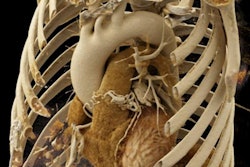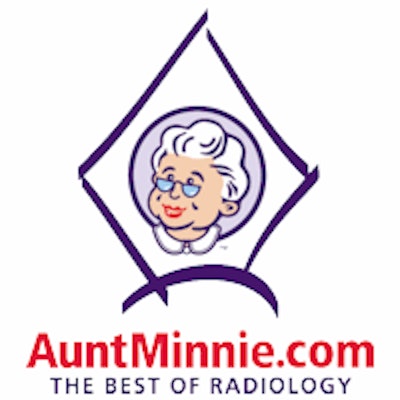
It's the economy, stupid. That mantra, attributed to Bill Clinton's political strategist James Carville in 1992, could just as easily apply to radiology in 2014.
Concern over economic issues shaped the selections by the Minnies expert panel this year, with many of the Minnies winners -- from Most Influential Radiology Researcher to Most Significant News Event in Radiology -- having some kind of connection to fiscal topics.
The awards indicate that radiology has yet to shake off the pain of a series of financial body blows still being felt throughout the industry. While there have been some bright spots -- digital breast tomosynthesis, for example, once again named the Hottest Clinical Procedure -- radiology professionals remain concerned about their financial well-being, even as the general economy begins to speed up.
Every year since 2000, AuntMinnie.com has awarded the Minnies, our annual ranking of the best of the best in radiology. Candidates are selected from nominations submitted in August by our members, and winners are chosen through two rounds of voting by our expert panelists; this year's campaign featured 201 candidates in 14 categories, along with the Best Radiology Image winner selected by votes on our Facebook page.
This year's winners are listed below.
Most Influential Radiology Researcher
Winner: Dr. Richard Duszak, Emory University/Harvey L. Neiman Health Policy Institute
The Minnies panel's focus on economic issues was evident in the selection of Dr. Richard Duszak as Most Influential Radiology Researcher. Duszak is chief medical officer of the American College of Radiology's (ACR) Harvey L. Neiman Health Policy Institute, and he is also vice chair for health policy and practice at Emory University in Atlanta.
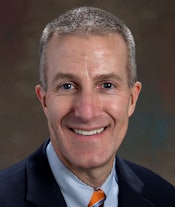 Dr. Richard Duszak from Emory University.
Dr. Richard Duszak from Emory University.Like many in radiology, Duszak took a circuitous route to his current focus on health policy. He received his medical degree from Pennsylvania State University and completed his residency at Duke University, followed by a fellowship in interventional radiology at the University of Pennsylvania.
He then spent the next 18 years in private practice, but he retained his interest in organized medicine, advocacy, and payment policy. This interest culminated in his appointment to the Neiman institute when it was formed by ACR in October 2012. Duszak made the move to academic radiology by joining Emory in January 2014.
Duszak attributes his receipt of the Minnies award to the work of a small but dedicated staff at the Neiman institute, including Research Director Danny Hughes, PhD. The institute's focus has been to address what Duszak calls a void of credible work being done in imaging as it relates to healthcare research and policy.
"People who don't understand what radiologists do and who we are are doing research on our field on things that haven't passed the laugh test of some radiologists," he told AuntMinnie.com.
Radiology perhaps hasn't done the best job in telling the rest of the world about the specialty's accomplishments -- a fact that may dovetail with the lack of interest many in the field had toward leadership and economics topics two decades ago. That has changed out of necessity due to radiology's status as a high-cost specialty in a resource-constrained environment, Duszak believes.
The Neiman institute's focus in recent research has been on describing how recent cuts in Medicare reimbursement for imaging services are affecting patient care. On a related topic, Duszak published a study on uncompensated care in the emergency setting that found that almost one-third of the services provided by radiologists to emergency departments are uncompensated -- a paper for which he was a Minnies runner-up in the Best Scientific Paper category.
Duszak believes the work he and others are doing -- from the Neiman institute to the ACR's Imaging 3.0 campaign to the organization's Radiology Leadership Institute -- is gaining traction.
"I think the future of radiology is bright, but it will be a different future than the unbridled growth that we had in the past," he said.
Runner-up: Dr. Geraldine McGinty, American College of Radiology
Most Effective Radiology Educator
Winner: Dr. Elliot Fishman, Johns Hopkins University
Dr. Elliot Fishman's selection as Most Effective Radiology Educator comes as no surprise, given his busy lecture schedule -- in fact, he was scheduled to go onstage to moderate a panel in Las Vegas when AuntMinnie.com reached him to notify him of his award.
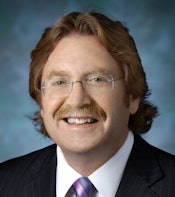 Dr. Elliot Fishman from Johns Hopkins University.
Dr. Elliot Fishman from Johns Hopkins University.Fishman has been running educational courses for the past 31 years as part of his appointment at Johns Hopkins University, where he also performs clinical duties and publishes 30 to 40 papers a year, working with junior faculty.
But Fishman believes his Minnies win is most likely due to his involvement in CTisus.com, which he launched 14 years ago as a clearinghouse for information about CT. Visitors to the site can find more than 800 CT lectures, as well as protocols, cases, teaching files, a library of more than 200,000 images, and even a song of the week
It's a labor of love for Fishman, who estimates that he spends a couple hours a day on the nonprofit site. He handles all of the content functions himself -- and he doesn't make a dime on any of it.
"I can look back and say that I'm doing something that's really helping somebody," Fishman told AuntMinnie.com. "We are providing a service to people, with no ulterior motive."
Fishman welcomed the arrival of social media, launching a Facebook Page for CTisus that sports over 32,000 likes -- a number that compares favorably to the likes of radiology titans such as RSNA and ACR.
Fishman said his enthusiasm for radiology remains undimmed, 34 years after entering the specialty, in spite of the challenges the field faces.
"I'm having more fun now than I've ever had," he said. "Every day there's something new, and you're constantly learning new stuff. People complain a lot about radiology; it's not going to be perfect, but it's a lot of fun."
Runner-up: Dr. Eliot Siegel, University of Maryland
Best Radiologic Technologist Educator
Winner: Shannon Walters, Stanford University
As one of the three co-managers of the 3D and Quantitative Imaging (3DQ) Lab at Stanford University, Shannon Walters is heavily involved in the training and education of technologists who are rotating through the facility.
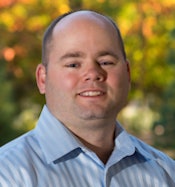 Shannon Walters from Stanford University.
Shannon Walters from Stanford University.Walters first became a radiologic technologist during a stint in the U.S. Army from 1997-2003, where he handled MRI duties at Walter Reed Army Medical Center, among other locations. Upon re-entering civilian life, he became an MRI technologist at Stanford, left the university for a job as a 3D technologist in Michigan, and finally returned to Stanford, becoming co-manager of the lab 18 months ago.
Walters enjoys the fact that 3D technologists are on the cutting edge of technology, using high-tech methods to solve the clinical problems of the day, such as helping colleagues in the catheterization lab get C-arm angles faster.
Technologists working in the 3DQ lab at Stanford have slowly been expanding their responsibilities, taking over duties once performed by radiologists, such as vascular measurements.
"Technologists are able to take over knowledge and processes from the radiologist and do them in a reliable manner," he said. "We are right there, able to solve problems right now; we are able to do it ourselves."
Working in 3D is key to the expanding role of technologists in healthcare, Walters believes. While technologists performing CT and MRI scans are helping to answer specific clinical questions, such as by ruling out disease, 3D technologists are going a step further by helping to demonstrate the pathology in an image.
"I like the fact that we are on the edge of technology, and we are pushing it every single day," he said.
Runner-up: Frances Gilman, Thomas Jefferson University
Most Effective Radiology Administrator/Manager
Winner: David DiMarcantonio, Hospital of the University of Pennsylvania
When David DiMarcantonio first entered radiology management in 2004, he ran into many colleagues who told him they were leaving the specialty because its golden days were over. Now, 10 years later, DiMarcantonio believes that radiology's more competitive environment is an improvement, both for patients and facilities.
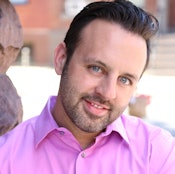 David DiMarcantonio from the University of Pennsylvania.
David DiMarcantonio from the University of Pennsylvania."My focus has always been on the patient and delivering that next level of customer service," DiMarcantonio he told AuntMinnie.com. "Now that we are focused on this, it allows someone who values customer service to have a louder voice."
DiMarcantonio got his start in radiology in marketing, promoting imaging centers in Florida and Pennsylvania. He moved into center operations in 2004 and joined the University of Pennsylvania in 2010, where he now serves as radiology practice manager.
DiMarcantonio said he enjoys working at a prestigious facility like Penn, but it's not all ivory tower radiology anymore; his background in the more cost-conscious world of independent centers serves him well.
"In the new era of healthcare, you are fighting for every dollar and fighting for every patient," he said. "You can't rest on your laurels, you have to go out and get it."
Both payors and patients are much more focused on cost now, and DiMarcantonio frequently hears from patients who -- sometimes at the behest of their insurer -- will actively seek out the lowest-cost imaging provider. DiMarcantonio has to work with patients to convince them of the value of having their scans performed at a major hospital.
Despite the challenges of the past few years, he believes that radiology is on an upswing.
"In administration and management, we have to focus not on having all the answers, but on knowing who to ask to get the answers," he said. "We need to have an inclusive style, and make patients leave with a smile on their face."
Runner-up: Carlos Vasquez, Franciscan St. Elizabeth Health






